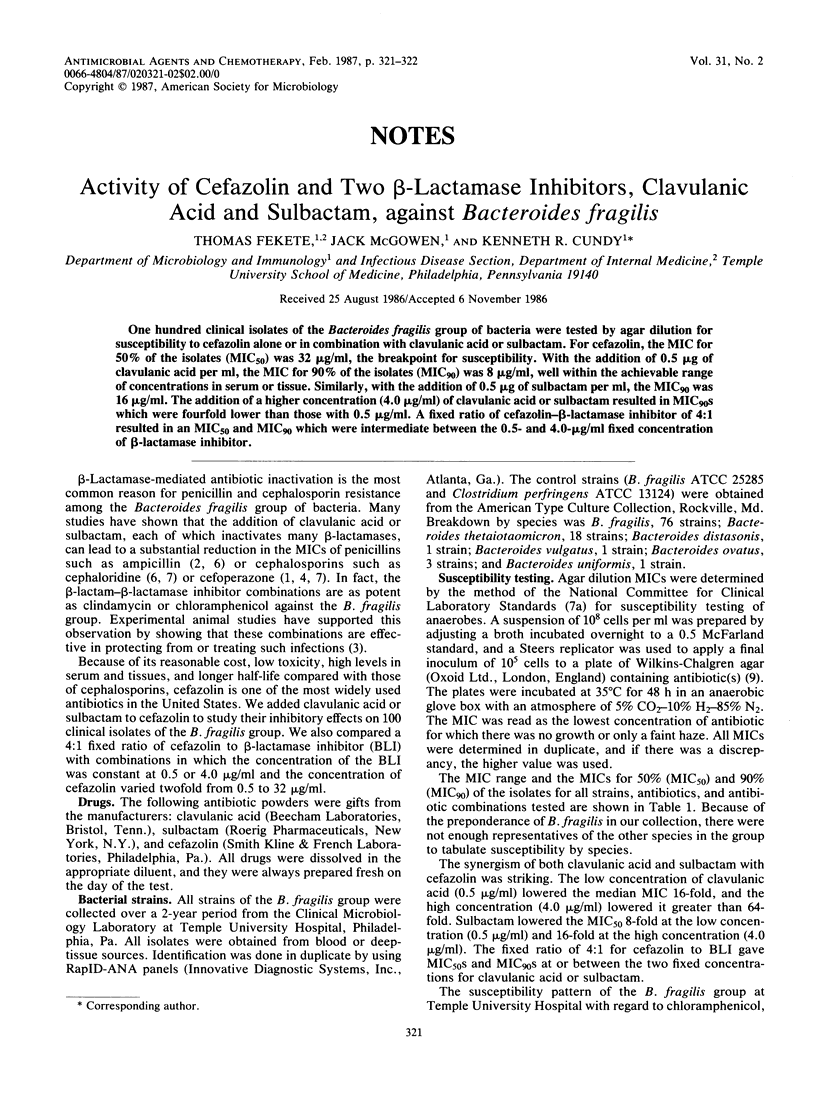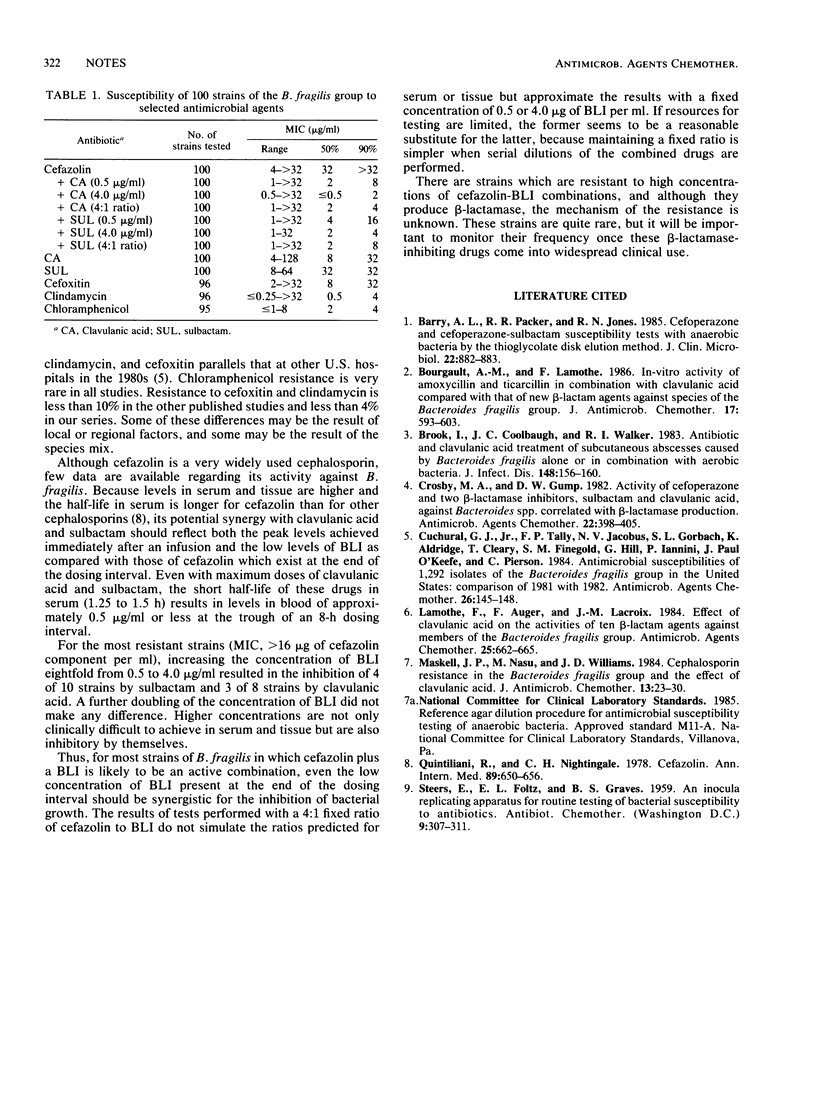Abstract
One hundred clinical isolates of the Bacteroides fragilis group of bacteria were tested by agar dilution for susceptibility to cefazolin alone or in combination with clavulanic acid or sulbactam. For cefazolin, the MIC for 50% of the isolates (MIC50) was 32 micrograms/ml, the breakpoint for susceptibility. With the addition of 0.5 micrograms of clavulanic acid per ml, the MIC for 90% of the isolates (MIC90) was 8 micrograms/ml, well within the achievable range of concentrations in serum or tissue. Similarly, with the addition of 0.5 micrograms of sulbactam per ml, the MIC90 was 16 micrograms/ml. The addition of a higher concentration (4.0 micrograms/ml) of clavulanic acid or sulbactam resulted in MIC90S which were fourfold lower than those with 0.5 micrograms/ml. A fixed ratio of cefazolin-beta-lactamase inhibitor of 4:1 resulted in an MIC50 and MIC90 which were intermediate between the 0.5- and 4.0-micrograms/ml fixed concentration of beta-lactamase inhibitor.
Full text
PDF

Selected References
These references are in PubMed. This may not be the complete list of references from this article.
- Barry A. L., Packer R. R., Jones R. N. Cefoperazone and cefoperazone-sulbactam susceptibility tests with anaerobic bacteria by the thioglycolate disk elution method. J Clin Microbiol. 1985 Nov;22(5):882–883. doi: 10.1128/jcm.22.5.882-883.1985. [DOI] [PMC free article] [PubMed] [Google Scholar]
- Bourgault A. M., Lamothe F. In-vitro activity of amoxycillin and ticarcillin in combination with clavulanic acid compared with that of new beta-lactam agents against species of the Bacteroides fragilis group. J Antimicrob Chemother. 1986 May;17(5):593–603. doi: 10.1093/jac/17.5.593. [DOI] [PubMed] [Google Scholar]
- Brook I., Coolbaugh J. C., Walker R. I. Antibiotic and clavulanic acid treatment of subcutaneous abscesses caused by Bacteroides fragilis alone or in combination with aerobic bacteria. J Infect Dis. 1983 Jul;148(1):156–159. doi: 10.1093/infdis/148.1.156. [DOI] [PubMed] [Google Scholar]
- Crosby M. A., Gump D. W. Activity of cefoperazone and two beta-lactamase inhibitors, sulbactam and clavulanic acid, against Bacteroides spp. correlated with beta-lactamase production. Antimicrob Agents Chemother. 1982 Sep;22(3):398–405. doi: 10.1128/aac.22.3.398. [DOI] [PMC free article] [PubMed] [Google Scholar]
- Cuchural G. J., Jr, Tally F. P., Jacobus N. V., Gorbach S. L., Aldridge K., Cleary T., Finegold S. M., Hill G., Iannini P., O'Keefe J. P. Antimicrobial susceptibilities of 1,292 isolates of the Bacteroides fragilis group in the United States: comparison of 1981 with 1982. Antimicrob Agents Chemother. 1984 Aug;26(2):145–148. doi: 10.1128/aac.26.2.145. [DOI] [PMC free article] [PubMed] [Google Scholar]
- Lamothe F., Auger F., Lacroix J. M. Effect of clavulanic acid on the activities of ten beta-lactam agents against members of the Bacteroides fragilis group. Antimicrob Agents Chemother. 1984 May;25(5):662–665. doi: 10.1128/aac.25.5.662. [DOI] [PMC free article] [PubMed] [Google Scholar]
- Maskell J. P., Nasu M., Williams J. D. Cephalosporin-resistance in the Bacteroides fragilis group and the effect of clavulanic acid. J Antimicrob Chemother. 1984 Jan;13(1):23–30. doi: 10.1093/jac/13.1.23. [DOI] [PubMed] [Google Scholar]
- Quintiliani R., Nightingale C. H. Cefazolin. Ann Intern Med. 1978 Nov;89(5 Pt 1):650–656. doi: 10.7326/0003-4819-89-5-650. [DOI] [PubMed] [Google Scholar]


